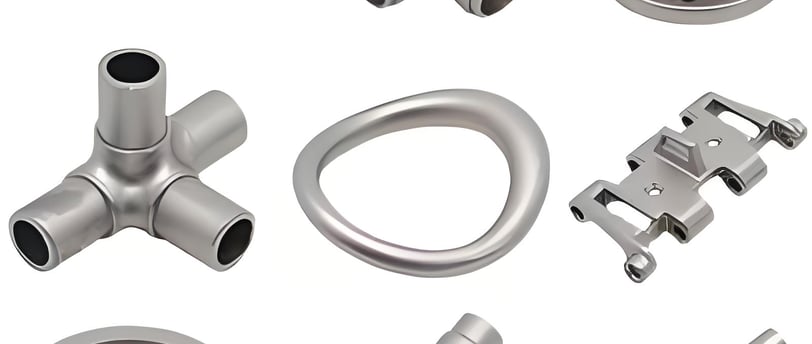Viscosity Design of Silica Sol Coating for Precision Casting
Silica Sol Shell Thickness Design: Principles and Industry Trends
heweifeng
6/20/20251 min read


Silica Sol Shell Thickness Design: Principles and Industry Trends
The thickness of silica sol shells is primarily influenced by the viscosity of the coating and the granularity of refractory materials (sand). While existing literature provides no definitive numerical standards, industry trends reveal a consistent direction: coating viscosity decreases progressively, while refractory sand granularity increases (i.e., mesh size decreases). This trend is driven by the dual considerations of shell thickness and mechanical strength:
Face Layer Design
High-viscosity coating + fine-grained sand: High-viscosity coatings rapidly form a dense face layer, combined with fine sand (e.g., 100-120 mesh zircon sand), to enhance surface finish and initial strength.
Transition Layer Design
Medium-viscosity coating + medium-grained sand: The transition layer has lower viscosity than the face layer but uses coarser sand (e.g., 30-60 mesh mullite sand). Its key role is to bridge the significant grain size difference between the face and back layers, preventing coarse sand from penetrating the face layer and causing surface defects.
Back Layer Design
Low-viscosity coating + coarse-grained sand: The back layer typically consists of multiple layers (e.g., 16-30 mesh mullite sand) to build overall shell thickness. Single or multi-coating systems can be adopted, depending on factory-specific requirements.
Case Study: Counterproductive Design in Practice
Some factories deviate from these principles. For example, a plant used an "abnormal" viscosity sequence: high-viscosity face layer → low-viscosity transition layer → high-viscosity back layer, claiming it would accelerate shell formation. However, this design caused critical issues:
Reduced strength: Weak interlayer adhesion led to shell collapse during wax removal.
Structural instability: Subsequent coatings failed to penetrate the transition layer and bond with the face layer, compromising overall integrity.
This case highlights that a progressive decrease in coating viscosity is critical for strength: Subsequent layers must penetrate through the transition layer to directly bond with the face layer, forming a unified, high-strength shell.
Conclusion
The viscosity gradient of silica sol coatings should follow the principle "face layer > transition layer > back layer" to ensure interlayer adhesion and structural strength. While specific parameters require customization based on factory equipment, sand properties, and product demands, the core logic of viscosity reduction remains non-negotiable.